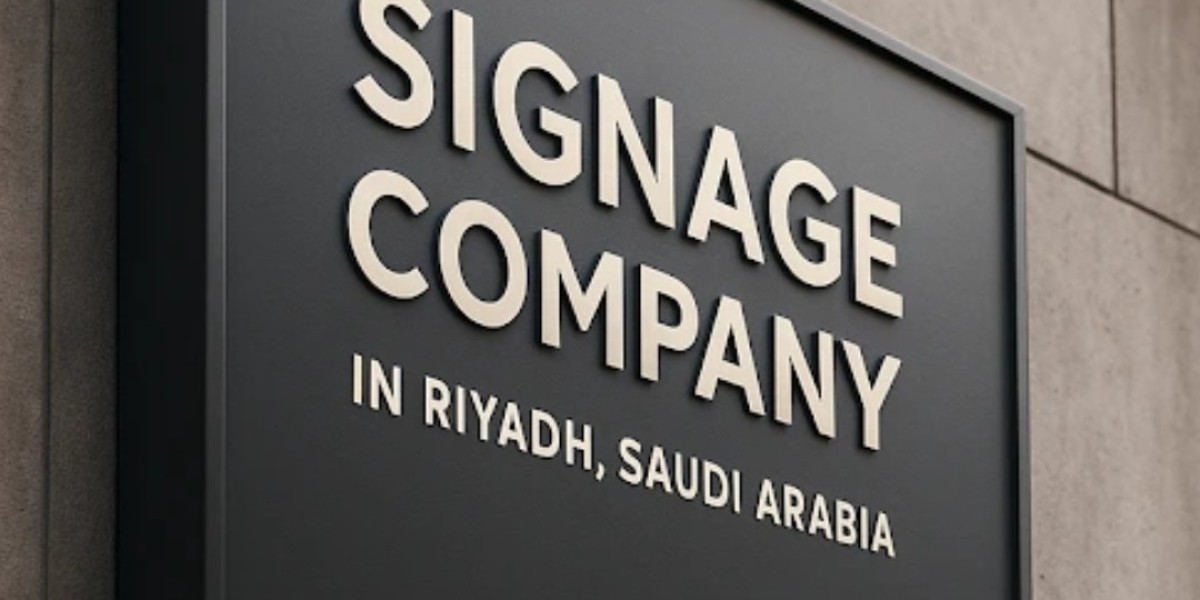Creating signage for your business is not just about putting up a board with your name on it. It's about designing a visual identity that represents your brand, attracts the right audience, and guides customers effortlessly to your services. Working with a professional signage company in Riyadh can make all the difference in this process—from initial concept to final installation.
Let’s walk through the right way to plan and execute a complete signage project, step by step.
Step 1: Understand Your Business Goals
Before you even think about colors or materials, it's important to ask: What do you want your signage to achieve?
Is it to increase foot traffic?
Is it for brand visibility on a busy road?
Do you need indoor signs to guide customers?
Do you want to highlight special offers or digital content?
Defining your goals will help you choose the right type of signage—whether it's traditional, illuminated, or digital.
Step 2: Site Assessment and Local Regulations
Location plays a big role in signage effectiveness. A sign that works well in a shopping mall may not work on a street corner. A good signage partner will visit the site, understand its environment, and measure visibility from different angles.
At the same time, it’s crucial to follow Riyadh’s municipal rules. Certain areas may have restrictions on size, lighting, or installation height. Ignoring these can lead to fines or the removal of your signage. That’s why working with professionals familiar with local regulations is a must.
Step 3: Choose the Right Type of Sign
There are many types of signs to consider:
Outdoor signs: Great for storefront visibility.
Pylon or monument signs: Ideal for businesses in large complexes or industrial areas.
Wall-mounted signs: Perfect for narrow spaces.
Indoor directional signs: Help customers navigate easily.
Digital signage: For dynamic, changeable messages.
Choosing the right one depends on your business location, target audience, and budget.
Step 4: Branding and Design Elements
Now comes the creative part—designing the look and feel of your signage. A well-designed sign should:
Reflect your brand colors and font
Be clear and readable from a distance
Include only essential information (like logo, phone number, or slogan)
Be visually balanced without too much clutter
Less is more when it comes to signage design. Overcrowded or flashy signs can confuse customers and dilute your message.
Step 5: Material Selection
In Riyadh’s climate, choosing the right materials is essential. The extreme heat, dust, and occasional sandstorms can affect the life of your signage.
Popular options include:
Aluminum: Lightweight, rust-resistant
Acrylic: Great for illuminated signs
Vinyl: Ideal for short-term promotions
LED panels: Long-lasting and energy-efficient
Make sure your chosen materials can handle local conditions and are easy to maintain.
Step 6: Fabrication Process
Once the design and materials are finalized, your signage enters the fabrication stage. Skilled technicians will cut, assemble, paint, and wire your sign according to the approved design.
This step involves:
Precision laser cutting or CNC routing
Electrical work (if lighting is involved)
Quality control for durability and finish
Be sure to ask for timelines and ensure that safety and quality standards are followed throughout the process.
Step 7: Professional Installation
Installation is a critical part of any signage project. Improper installation can cause damage to the sign, building, or even pose safety hazards.
Your signage company will:
Secure all needed permits
Use proper equipment (like cranes or scaffolding)
Ensure stable mounting and electrical connections
Conduct post-installation testing
A properly installed sign will last longer and function better—whether it's static, lit, or digital.
Step 8: Maintenance and Updates
Signage is not a one-time effort. Regular cleaning, electrical checks, and repairs are necessary to maintain its effectiveness.
Some modern signs, especially digital ones, allow remote content updates and software monitoring. If your business runs regular promotions, this is a major advantage.
Set a schedule for routine maintenance and assign a staff member or hire a service provider to keep things in top shape.
Bonus Tip: Go Digital for More Impact
Digital signs are growing in popularity for a reason. They offer flexibility, interactivity, and a modern look that grabs attention—especially in busy areas of Riyadh.
LED advertising screens in Riyadh are perfect for:
Retail stores
Restaurants
Malls
Events and exhibitions
They allow you to rotate messages, display live data, or run promotions instantly. While the initial investment may be higher, the long-term returns and engagement are worth it.
Conclusion
Planning a complete signage project involves more than picking a logo and printing it big. From setting your goals and choosing the right type of sign, to working with professionals and following local rules—each step ensures that your investment in signage brings real business results.
Partnering with an experienced signage company in Riyadh ensures your project stays on track, from design to installation and maintenance. And if you're ready to take it further, upgrading to LED advertising screens in Riyadh can push your brand visibility and engagement to the next level.






